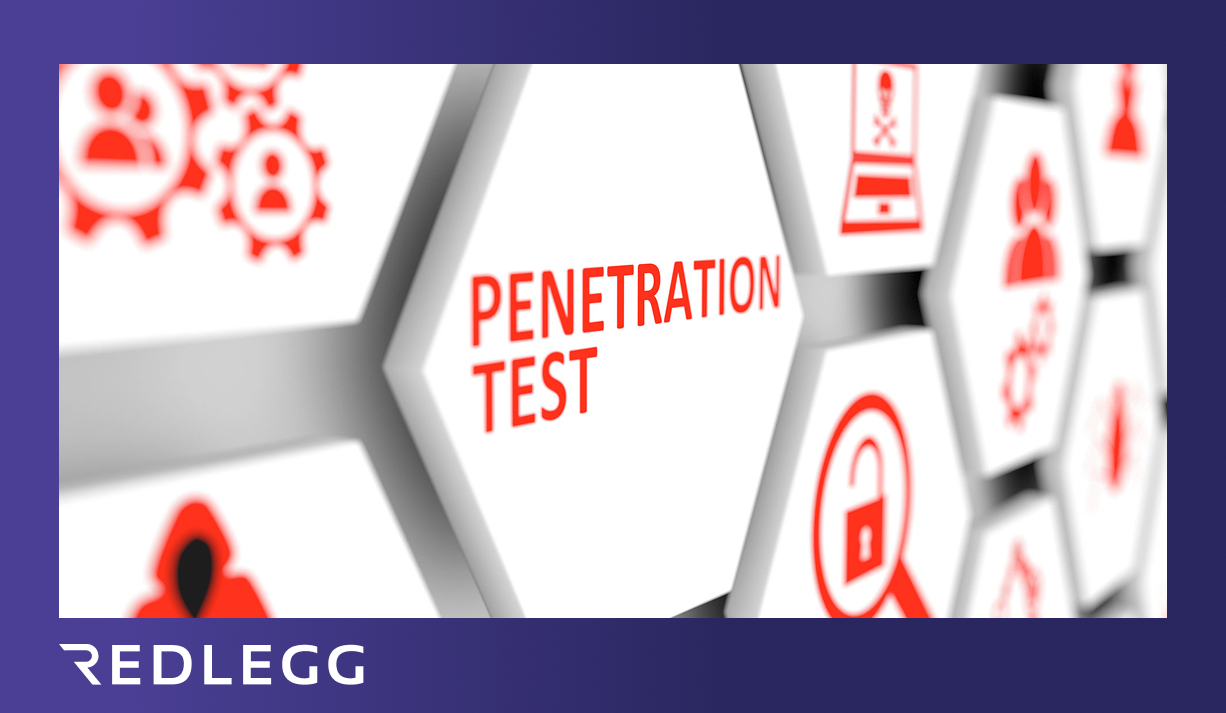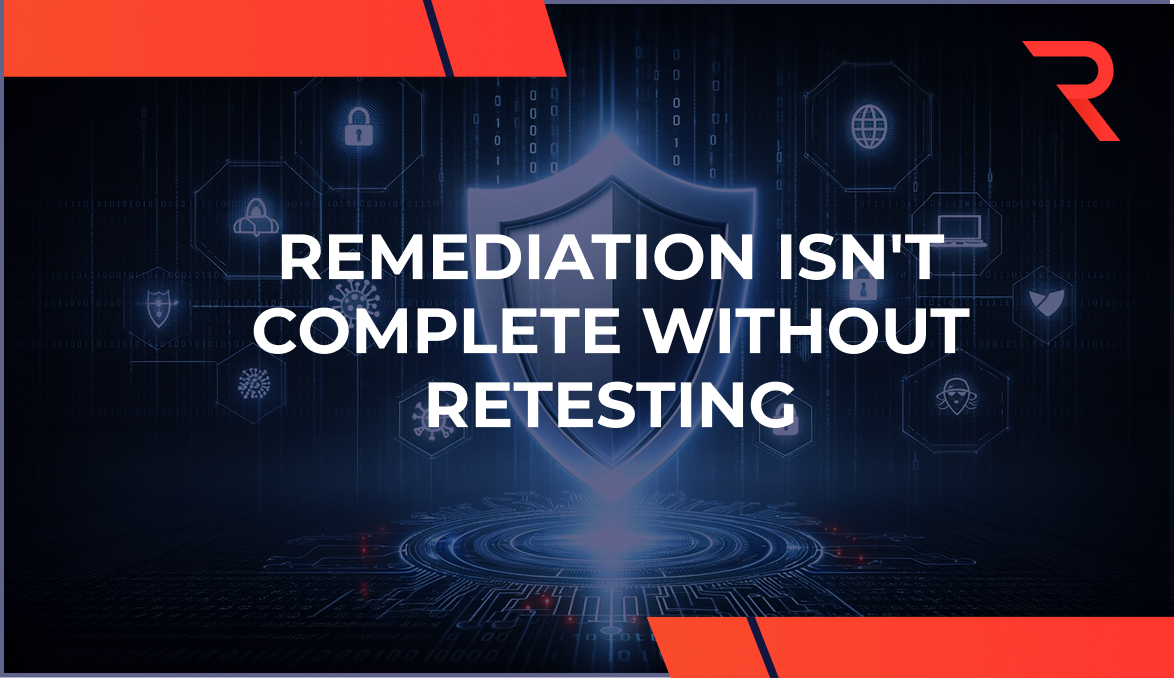16 min read
By: RedLegg Blog
Cybersecurity has been an increasing concern since the rapid adoption of cloud computing in organizations of all sizes.
The best way organizations can protect themselves against cyber attacks is to hack into their own networks and systems!
Ethical hacking, as it is called, is an effective information security technique to deal with a constantly evolving threat landscape.
Penetration testing (Pen tests) is a form of ethical hacking that is an invaluable way to assess and expose the vulnerabilities in an organization's network or systems.
Read on for an in-depth discussion on the value of pen tests in identifying and responding to security issues and how RedLegg's specialist testers conduct internal and external pen tests to simulate real-world attackers and secure your networks.
Understanding Penetration Testing (Pen Test)
Penetration testing is a controlled simulation of a cyber attack that helps identify and assess security weaknesses in computer systems, networks, and applications—both on-premises and in cloud environments.
The main reason for using pen tests is to uncover vulnerabilities in an organization's security measures that could be maliciously used by threat actors.
While vuln scans identify vulnerabilities, pen tests also exploit the identified weaknesses and breach the security infrastructure, exposing the potential for severe consequences of a real-life attack.
To understand pen testing in greater detail, read here: “Pretty Much Everything You Need to Know About Pen Testing!”
There has been an unprecedented increase in cyber threats. Consequently, there is a growing need for continuous security testing, resulting in a growth in revenue from pen testing. According to Gartner, the penetration testing market is expected to reach USD 4.5 billion by 2025.
Pen tests could be of 2 types: external and internal. Let's explore these in further detail.
The Importance of External Pen Testing
External penetration testing addresses perimeter vulnerabilities and evaluates the potential risks of external cyber threats.
Specialist testers attempt to gain entry into the organization's network by leveraging vulnerabilities discovered on the external assets, such as email, websites and file shares. The goal is to simulate how a bad actor may try to breach the security perimeter externally, through the internet or other public resources, and gain unauthorized access to the organization's systems and data.
Pen tests play a pivotal role in protecting the organization's networks, web and mobile applications, and privileged data on-premises or stored in cloud environments.
Pen testers achieve this goal by mimicking the actions of a real-world threat actor and exposing the threat before an actual attack takes place. They virtually beat bad actors at their own game!
Significance of Internal Pen Testing
Once penetration testers have breached the organization's perimeter security, they focus on laterally moving across internal systems and applications to expose security gaps that threat actors could exploit.
Many companies stop at external pen tests and skip internal testing because they don't think they will likely face insider threats. But this couldn't be farther from reality.
Every year, millions of dollars are lost due to insider attacks—sometimes, such attacks are intentional and malicious. But in several cases, internal security risks are due to the unintentional actions of negligent employees, partners, vendors or suppliers who have authorized access to the organization's networks and applications.
Internal pen testers may use the same system that was compromised during the external test to perform the internal test. However, many prefer to deploy a designated testing device or laptop within the network as it offers more stability during the tests. Once the testers gain admin access to the systems, the security is considered breached, and the internal test is complete. Most of the time, testers must try multiple routes of attack to accomplish this goal. Often, the initial attack targets less critical systems, and the information accessed from them is used to target the most vital parts of the system or network.
Download our free sample report to see how Redlegg's external and internal penetration test services can help better protect your company from a cybersecurity breach!
Validating your Company’s Security Policies
Have you validated the effectiveness of your company's cybersecurity policies?
Penetration tests can reveal just how well-protected your networks and systems are under your current cybersecurity policies. Pen test reports provide actionable insights into the types of vulnerabilities they have discovered and how they can be fixed.
They uncover the weak links and gaps in your company's internal cybersecurity policy enforcement to strengthen both internal and perimeter security.
The idea behind penetration testing is to test your company's security policies in simulations that are almost identical to real-life scenarios and, therefore, assess as accurately as possible the level of protection you have built.
Wondering how much a pen test costs?
Leveraging External vs Internal Pen Tests
Are there any reasons to choose between the two types of pen tests (internal vs external penetration testing)? Clearly not.
A comprehensive approach to cybersecurity necessitates a combination of external and internal penetration tests.
The dual approach addresses various security risks and vulnerabilities from different perspectives, producing a more effective defense against bad actors.
It covers potential attack vectors from both external and internal sources, strengthening your company's overall security posture.
A synergistic use of internal and external pen testing helps you answer questions such as:
- Are access control rights stringently enforced?
- How fast and effective are your incidence response procedures in case of a security breach?
- Are your systems and applications configured according to the security protocols outlined in your cybersecurity policies?
- Are your company's software and applications up to date with the requisite patches and fixes?
And many more.
Talk to the pen testing experts at RedLegg to understand how a combination of internal and external pen tests can help find vulnerabilities in your security infrastructure and policies and how you can fix them.
RedLegg: Strengthening Security with External and Internal Pen Tests
Regular and systematic pen testing ensures that your security policies are implemented correctly and provide the intended protection.
At RedLegg, we help you lower your business's risk by finding and fixing the weaknesses in your security infrastructure.
Some penetration testers rely solely on automated tests. But it takes manual testing to simulate what a malicious attacker sees—that's why we use a proven process that combines automated tools and manual methods for depth and breadth testing.
RedLegg's comprehensive pen testing services help you understand the implications of test findings, and our testing experts recommend clear and actionable steps for remediation.
We approach your network and systems just like an attacker would—giving you reliable recommendations from trusted cybersecurity penetration testers.
We can help you with:
- Network Penetration Testing
- Internal / External Penetration Testing
- Physical Penetration Testing
- Wireless Network Testing
- Vulnerability Scanning
- Application Penetration Testing/Assessments
Want to schedule a pen test for your company?
Contact the cybersecurity experts at RedLegg and find the gaps in your security—before malicious actors do!
Want more? Learn...








